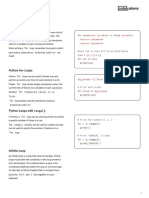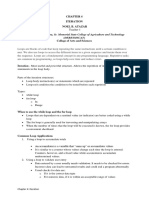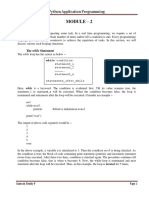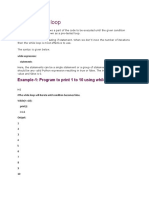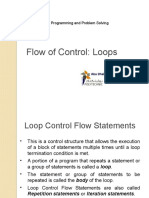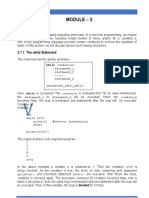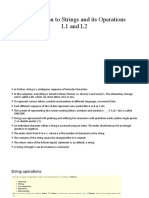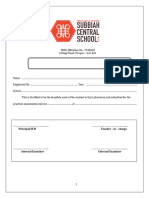0% found this document useful (0 votes)
31 views4 pagesLearn Python 3 - Loops Cheatsheet - Codecademy
The document provides an overview of various Python looping constructs, including the use of 'break' and 'continue' keywords, list comprehensions, for loops, while loops, and nested loops. It includes code examples demonstrating how each loop works and their respective functionalities. Additionally, it explains concepts like infinite loops and the use of the range() function for controlling loop iterations.
Uploaded by
scribd1roanneCopyright
© © All Rights Reserved
We take content rights seriously. If you suspect this is your content, claim it here.
Available Formats
Download as PDF, TXT or read online on Scribd
0% found this document useful (0 votes)
31 views4 pagesLearn Python 3 - Loops Cheatsheet - Codecademy
The document provides an overview of various Python looping constructs, including the use of 'break' and 'continue' keywords, list comprehensions, for loops, while loops, and nested loops. It includes code examples demonstrating how each loop works and their respective functionalities. Additionally, it explains concepts like infinite loops and the use of the range() function for controlling loop iterations.
Uploaded by
scribd1roanneCopyright
© © All Rights Reserved
We take content rights seriously. If you suspect this is your content, claim it here.
Available Formats
Download as PDF, TXT or read online on Scribd
/ 4




